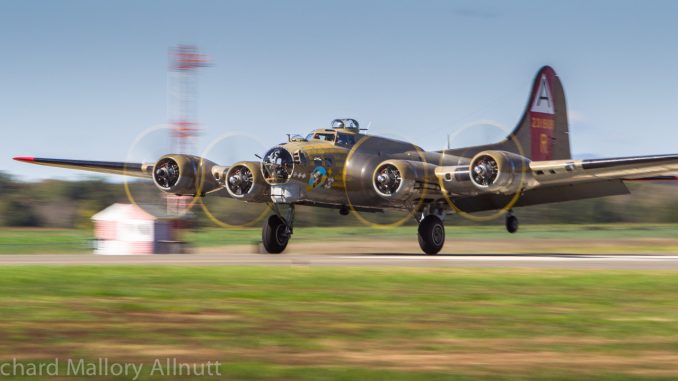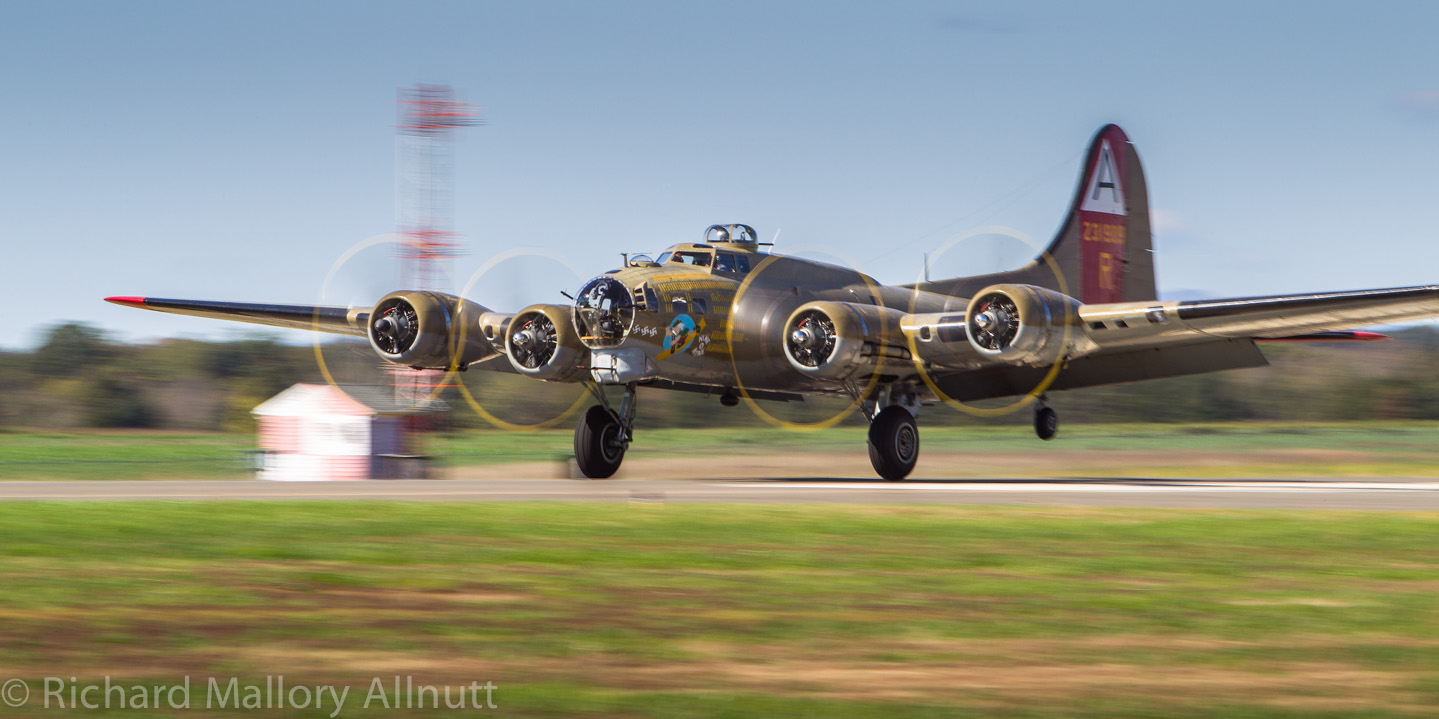
The Collings Foundation’s B-17G ‘Nine-o-Nine’ was exempted from the moratorium on “Living History Flight Experiences”, but other aircraft in the collection were not. Now with the moratorium lifted, hopefully Collings, along with many other warbird operators and potential operators will be able to share their vintage aeroplanes with the general public. (Photo by Richard Mallory Allnutt)

The Experimental Aircraft Association has successfully lead a four-year effort to get the Federal Aviation Administration to lift their moratorium on “living history flight experiences.” The moratorium had prevented the approval of any new applications by warbird operators to allow paying passengers to fly in their vintage aircraft. While the moratorium did not prevent aircraft that already possessed the appropriate exemptions from offering rides, like the EAA’s B-17G Aluminum Overcast, it did stymie many other warbirds/warbird operators.
The FAA had originally put the moratorium in place as a temporary measure back in 2011 with the idea of standardizing training practices. Originally slated to last just 18 months, the moratorium lingered far beyond its intended lifespan with no end in sight. Without the weight of the EAA and others pushing back repeatedly against the moratorium, it might easily have been ignored, as the area of aviation affected represents just a tiny fraction of the FAA’s responsibilities, which are dominated largely by the airlines.
EAA representatives spoke about the decision in a recent article published on their website:
“Lifting of the FAA moratorium after four long years is an important first step,” said Sean Elliott, EAA’s vice president of advocacy and safety. “We remain concerned on some of the language and terminology used in the document, however, and how it might be interpreted in the field to limit certain aircraft. We will remain watchful to ensure freedom and consistency for these operations that are extremely popular.”
Elliott added that EAA is ready to assist the FAA through continued leadership on this issue. That could include forming a community-agency partnership to provide feedback policy implementation and interpretation, as well as working to establish safety requirements and documentation of various training programs.
“We will continue to monitor implementation and compliance issues, because the day-to-day FAA decisions in the field are a key to determining how successful this will be,” he said.
EAA will continue to follow-up with the FAA on this and other key aviation issues during meetings in Oshkosh this week.
The decision will affect many operators, such as the Collings Foundation and Planes of Fame in Chino. This is a major victory, not only for the EAA, but for the warbird movement as a whole. It means there is now a potential revenue stream which will at least offset the massive expense of flying some vintage aircraft not previously exempted from the moratorium. It will certainly lead to more warbirds being kept in airworthy condition and, in some cases, might be the difference between keeping an aircraft preserved for future generations or having it fade into the scrap man’s grasp…. at least for the larger types which will struggle to survive outside without funding for maintenance or hangar space.
Another important factor to consider is that flying in a vintage aeroplane, or seeing one fly, is often the spark which lights up a young person’s imagination and lifelong fascination with aviation. This was true for many of those reading this very article. Without that ignition of interest in today’s children, we will not have a future generation willing to preserve this important historical legacy either on the ground or in the air. Well done EAA!



This is but a temporary victory. The only real solution is uUnambiguous changes to the FAR that prevent the FAA from defining these contribution driven operations as “commercial” and then a means of oversight that assures the FAA follows the rules. As long as such operations require waiver, the FAA can make arbitrary decisions on “policy” without oversight or public review.
Ben you nailed it.
Truely glad to hear this great news for WARBIRD people who are willing to share their love of historic aircraft. WELL DONE EAA!!
Does this allow aerobatic flight training as was being done by the Collins Foundation and certain CAF Wings, but was ruled against last fall by FAA General Councel?
I hope that there will be some consistency in the rules now. I know of at least one operation where the pilot taking people for rides as a reward for a “donation” to the non-profit organization that operates the vintage ex-military aircraft was only a private pilot!
How about it Rotorhead, can YOU fly that ex-military aircraft that the “only a private pilot” flies? I will guarantee you I can fly my high performance aircraft with more expertise, confidence and safely than my 10,000 and 18,000 hr ex-military/airline pilot friends and I’m “only a private pilot”. It appears we have “pilot snobs” in the aviation community as in other vocations.
I’m not so sure that Rotorhead was being a snob about it, OnlyAPrivate. Flying skills very greatly, whether ATP, Commercial, or Private. But to operate with any kind of compensation, FAR’s require a Commercial License as a minimum. That includes just getting fuel for doing an airshow.
I am not being a snob. I am just saying that if the people riding paid money, maybe the pilot should at least hold a commercial certificate and be subject to the same drug/alcohol testing requirements that I am to operate a sightseeing operation.
I participate on the Board of Directors as a Videographer for the Colorado Eighth Air Force Historical Society and am also a Private Pilot. It was our WWII veterans and a single ride several years ago in EAA’s B-17 “Aluminum Overcast” that inspired me to become a Pilot! I wish to extend my thanks to both the EAA and FAA for providing this decision to keep America’s vintage aircraft flying. These amazing airplanes enabled our brave veterans to help pave America’s way to freedom, so many years ago. It’s now our turn to continue sharing our important history for generations to come. Let’s continue to keep our American legacy and history alive! Thank you so much! – Lynn Cooper
This is good news for Warbird Operators, but if someone had a civilian aircraft and wanted to do a “Living History Flight Experience”, such as a DC-3 restored to 1930s condition, they still would be stuck having to operate under FAR 135 for an air taxi service. And this FAR has different sets of regulations depending on the number of seats in the plane, 1 to 19 or 20 and up. So, a DC-3 that could carry 21 to 32 people, depending on its configuration, may only be able to have seats for 19 people so the operator can be in compliance with the “easier” (this being a relative term) conditions set forth for a plane with only 1 to 19 passenger seats. I think there is a market for flight experiences with antique civilian types, such as the DC-3, but the FAR 135 makes it almost impossible for anyone to be able to operate as such without significant corporate or major organizational backing.
The FAA announces the end of the FAA-imposed moratorium on new petitions for exemption, or amendments to existing exemptions, from certain sections of 14 CFR for the purpose of carrying passengers for compensation or hire on LHFE flights.